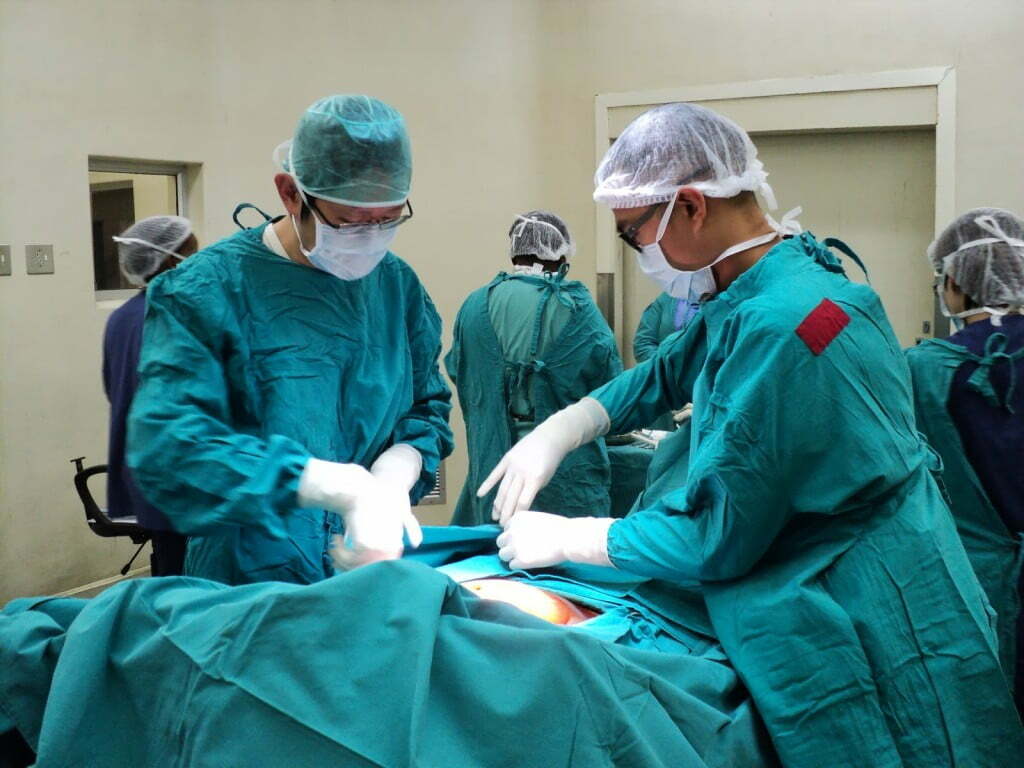
In a landmark development, Dr. Pradeep Jain, a prominent Gastro-Intestinal Surgeon at the Fortis Hospital Shalimar Bagh and his team recently achieved success in removing the pancreas and small intestine of a 65-year-old female cancer patient.
It is the first such minimal invasive surgery procedure using a laparoscopic technique in the Delhi-NCR region.
The significance of this operation stems from fact that Pancreatic Cancer – is one of the deadliest cancers known and the traditional surgical method to remove the pancreas, duodenum and bypass between the stomach and jejunum for passage of food is very complex and time-taking. Now the same procedure can be done “Laparoscopically” with a few very small holes.
The patient was successfully released from the hospital after a week because her post-surgery recovery was remarkable.
Led by Doctor Jain, the Department of Laparoscopic and Minimal Access Surgery at Fortis Hospital Shalimar Bagh- New Delhi delivers a wide spectrum of gastrointestinal surgical procedures. These include complicated procedures like Total Laparoscopic Colo-Rectal Surgery, Thoracic-laparoscopic Esophagectomy, Laparoscopic Liver Resection, Laparoscopic weight loss [Bariatric] surgery, Laparoscopic Gastrectomy for Cancer of the stomach.

It is the only department of Laparoscopic GI Surgery where all variety of pancreatic surgery including surgery for pancreatic cancer, pancreatic necrosis, and pseudocysts are being done by the minimal invasive technique.
Pancreas, a glandular organ in the digestive system within the abdomen, secretes digestive enzymes that assist digestion and absorption of nutrients.
Like the other organ systems in the human body, various pathological ailments are known to affect this valuable organ.
One of them is Pancreatic Cancer – one of the deadliest cancer associated with a high mortality.
The symptoms attached to Pancreatic Cancer are often non-specific in the early phase and often do not appear until the disease is advanced. These symptoms include abdominal or back pain, jaundice, loss of appetite, passage of dark colored urine and light colored stools.
The treatment depending on the stage of the disease, and surgical management is only feasible among 20% patients with localized disease.
The standard surgical procedure in case of the pancreatic head involves removal of the affected part of the pancreas along with segment of the duodenum and creating a bypass between the stomach and the jejunum for passage of food.
In concurrence, an anastomosis is made between the bile duct and the jejunum to ensure proper drainage of the bile and the remnant part of the pancreas is attached surgically to this segment of a small intestine.
A few decades ago this prodigious surgical procedure was done by the open technique involving a large abdominal incision and significant postoperative morbidity with a subsequent delayed recovery. With the gradual evolution in the minimally invasive surgical methods, the procedure is now being successfully accomplished laparoscopically.
The minimal invasive [Laparoscopic] method with few tiny holes only productively negates the drawbacks associated with the open method and is also associated with less post-procedural discomfort, early recovery, and a shorter hospital stay.
However, the success of the procedure by this technique not only depends on the stage of the disease but also on the proficiency of the operating surgeon with this technically challenging method.

